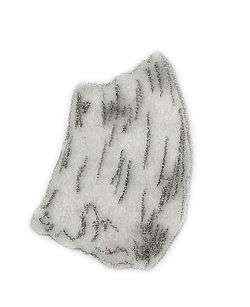Szechuanosaurus
Szechuanosaurus ("Szechuan lizard") is an extinct [1] genus of carnivorous theropod dinosaur from the Late Jurassic. Fossils referred to the genus have been found in China, Asia in the Oxfordian (Peng et al., 2005).[2] Its type species is largely based on several undiagnostic teeth from the Shangshaximiao Formation.
| Szechuanosaurus | |
|---|---|
 | |
| Szechuanosaurus and Huayangosaurus mounted skeletons at the Zigong Dinosaur Museum | |
| Scientific classification | |
| Kingdom: | Animalia |
| Phylum: | Chordata |
| Clade: | Dinosauria |
| Clade: | Saurischia |
| Clade: | Theropoda |
| Clade: | Neotheropoda |
| Genus: | †Szechuanosaurus Young, 1942 |
| Type species | |
| †Szechuanosaurus campi Young, 1942 | |

Discovery and species
Three species have been assigned to this genus over the years. The type species is Szechuanosaurus campi, named by Yang Zhongjian ("Chung Chien Young") in 1942 for four isolated tooth specimens: IVPP V235, two partial teeth; IVPP V236, a partial tooth; IVPP V238, several tooth fragments; and IVPP V239, a single tooth. The teeth form a syntype series and were not found together. Also a very fragmentary skeleton, specimen UCMP 32102, was referred to the genus by Yang.[3] Some of the teeth indicate a large body-size. These fossils, although possibly sinraptorid, are now considered to be non-diagnostic, making S. campi a nomen dubium.[4][5] The generic name refers to Szechuan. The specific name honours the American paleontologist Charles Lewis Camp who had discovered UCMP 32102.[6]
A partial skeleton, CV 00214, was initially listed by Dong et al. (1978) in a faunal list as a new species of Szechuanosaurus, Szechuanosaurus yandonensis.[7] At first, there was no description or illustration of it, making S. yandonensis at the time a nomen nudum. Later, Dong Zhiming et alii (1983) described it, and assigned it to Szechuanosaurus campi[8] The affinities of this skeleton are uncertain, and it has only been briefly described. Holtz et al. (2004) included it in their phylogenetic analysis and found it to be the most basal tetanuran.[9] This individual was a medium-sized theropod, with an ischium (a pelvic bone) of 420 millimetres (17 in); for comparison, an ischium of Piatnitzkysaurus estimated to weigh 504 kilograms (1,111 lb) is 423 millimetres (16.7 in) long.[5] In 2000, Daniel Chure referred the specimen to "Szechuanoraptor dongi", itself an invalid nomen ex dissertatione.[1] Carrano, Benson & Sampson (2012) synonymized it with Yangchuanosaurus shangyouensis from the same formation.[10]
The third species is Szechuanosaurus zigongensis, named by Gao Yuhui in 1993 for an almost complete skeleton, specimen ZDM 9011.[11] It is an older species, from the Middle Jurassic, appearing to be distinct from the type species and therefore requires its own genus name.[5] It was reassigned to Yangchuanosaurus, as a Yangchuanosaurus zigongensis, by Matthew Carrano, Roger Benson & Scott Sampson in 2012.[10]
Notes
- Chure, D.J. (2000) A new species of Allosaurus from the Morrison Formation of Dinosaur National Monument (UT–CO) and a revision of the theropod family Allosauridae. Unpublished Ph.D. dissertation, Columbia University, New York
- Peng, G.Z., Ye, Y., Gao, Y.H., Shu, C.K., Jiang, S. (2005): Jurassic dinosaur faunas in Zigong. Sichuan People’s Publishing House, 236 pp
- Young, C.C., 1942, "Fossil vertebrates from Kuangyuan, N. Szechuan, China", Bulletin of the Geological Society of China, 22: 293-309
- X.-C. Wu, P. J. Currie, Z. Dong, S. Pan, and T. Wang. 2009. A new theropod dinosaur from the Middle Jurassic of Lufeng, Yunnan, China. Acta Geologica Sinica 83(1):9-24
- Brusatte, S. L., Benson, R. B. J., and Xu, X. 2010. "The evolution of large-bodied theropod dinosaurs during the Mesozoic in Asia". Journal of Iberian Geology, 36: 275-296
- Camp, C.L., 1935, "Dinosaur remains from the Province of Szechuan", Bulletin of the Department of Geology of the Univiversity of California 23: 467-471
- Dong, Z., Chang, Li & Zhou, 1978, "Note on a new carnosaur Yanchuangosaurus shangyuanensis gen. et sp. nov.) from the Jurassic of Yangchuan District, Szechuan Province", Kexue Tongabao 5: 302-304
- Dong, Z-M., Zhou, S., Zhang, Y. (1983): [The dinosaurian remains of Sichuan Basin, China]. Palaeontologica Sinica (new series C), 23: 1–145 [in Chinese with English summary].
- Holtz, T.R., Molnar, R.E., Currie P.J. (2004): Basal Tetanurae. In: D.B. Weishampel, P. Dodson, P., H. Osmólska (ed.), The Dinosauria, 2nd edn. University of California Press, Berkeley, 71-110
- Carrano, M. T.; Benson, R. B. J.; Sampson, S. D. (2012). "The phylogeny of Tetanurae (Dinosauria: Theropoda)". Journal of Systematic Palaeontology. 10 (2): 211–300. doi:10.1080/14772019.2011.630927.
- Gao, Y., 1993, "A new species of Szechuanosaurus from the Middle Jurassic of Dashanpu, Zigong, Sichuan", Vertebrata PalAsiatica 31(4): 308-314

















